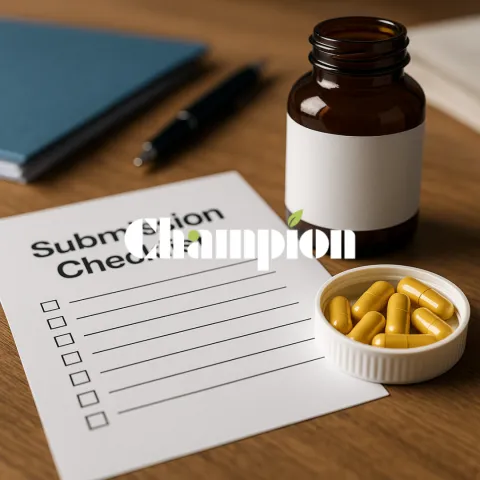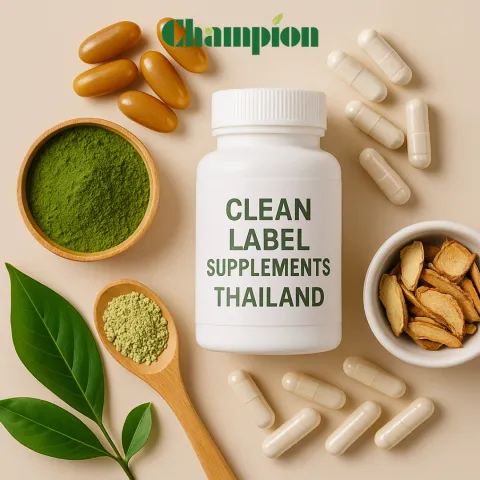Blog
24.Sep.2025
The US Supplement Market in 2025: Certification and Entry Guide

Introduction
The US supplement market is the world’s largest and most competitive—growing to $60 billion annually by 2030 and encompassing more than 100,000 unique products. But breaking into this lucrative space in 2025 requires more than great branding and trending ingredients. Today’s success stories are rooted in rigorous compliance: FDA regulations, NSF and third-party certifications, robust labeling, and new Amazon rules are reshaping the path to launch and long-term growth.Core Entry Requirement: FDA Compliance
- Dietary supplements are regulated under the Dietary Supplement Health and Education Act (DSHEA, 1994).
- No pre-market FDA approval is required, but all products must follow 21 CFR 111 Good Manufacturing Practice (GMP), ensuring ingredient quality, batch traceability, and documented manufacturing SOPs.
- Facility registration with the FDA is mandatory for all manufacturers, including overseas brands exporting to the US market.
- The FDA’s new Human Foods Program (HFP, 2025) has increased scrutiny on new ingredients and post-market surveillance—be prepared for robust documentation, recall readiness, and audit demands.
Third-Party Certifications: NSF/ANSI 173 and “Certified for Sport”
- NSF/ANSI 173: The leading independent standard for supplement ingredient and contaminant testing.
- Certification covers label claim verification, toxicology review, and screening for contaminants (heavy metals, unlisted ingredients).
- Annual audits and random batch testing are required.
- NSF Certified for Sport: Required for sports supplements sold to athletes or teams—screened for over 280 banned substances, including stimulants, narcotics, and steroids.
- UL Solutions, Eurofins, and other TIC partners are increasingly accepted for physical product testing and compliance, especially on platforms like Amazon.
Amazon’s 2025 Supplement Compliance and Certification
- Amazon requires third-party product verification for ALL supplements as of April 2024—with stricter enforcement in 2025.uniwelllabs
- Key compliance steps:
- Valid GMP certificate from an accredited certifier
- Third-party lab testing (NSF, UL, Eurofins)
- Ingredient, label, and contaminant verification
- Random sampling and post-listing testing even after initial approvalsellercentral.
- High-risk categories—weight management, sports, sexual enhancement—face extra testing and scrutiny.
- Failure to comply leads to listing removals and possible account penalties.
Labeling and Marketing Compliance
- All supplements must be properly labeled per FDA guidance, including:
- Supplement Facts panel (active/inactive ingredients, amount per serving)
- Contact/production information for the manufacturer or distributor
- Allergy statements, recommended use, warning/caution
- No disease claims: Supplements may not claim to treat, prevent, or cure diseases; only structure/function, nutrient support, or well-being statements allowed.
- Label claims must be truthful and substantiated per both FDA and FTC guidelines—incorrect claims are targeted for civil penalties and product recalls.
- E-commerce platforms and big box stores regularly audit compliance; maintaining digital copies of all documentation is required.
Typical Steps for Successful Market Entry
- Understand and Prepare for GMP Compliance
- Facility audit, documentation of quality controls and SOPs per 21 CFR 111
- Staff training, ingredient traceability, supplier management
- Register the Manufacturing Facility
- Register with FDA (even for contract manufacturers/exporters)
- Obtain establishment and facility registration numbers for all sites involved
- Gap Assessment Audit with Certification Body
- Conduct a comprehensive gap audit to identify/document non-conformities
- Address and resolve all gaps before third-party testing
- Obtain Third-Party Certification
- Choose accredited partners: NSF/ANSI 173, UL Solutions, or Eurofins
- Submit formulas, documentation, and product samples for review and batch testing
- Regular retesting required annually (or as stipulated by the certifier)
- Label Review and Testing
- Prepare all labels to FDA standard (including Supplement Facts)
- Undergo ingredient and contaminant testing
- Ensure no disease claims or misleading marketing
- Launch and Maintain Ongoing Compliance
- Keep detailed records of every lot and all certifications up to date
- Be audit-ready for Amazon, retailers, and FDA import/border checks
Exporter’s Checklist: US Certification & Entry
| Step | Requirement | Frequency |
| GMP Certification | 21 CFR 111 audit, staff training, ingredient tracking | Annual |
| FDA Facility Registration | Obtain establishment number, renewal | At registration + renewal |
| NSF/Third-Party Testing | Label/dosage verification, contaminants | Initial + annual |
| Label Review | Supplement Facts, allergen warnings, structure/function claims | All SKUs |
| Random Sampling | Post-listing on Amazon/retail | Ongoing / at request |
| Documentation | COAs, audit reports, shipment logs | All shipments |
US Supplement Market: Opportunities & Pitfalls
- Market potential: The US supplement market to grow another $21B (7% CAGR) between 2025–2029.
- Greatest growth sectors: wellness & longevity, plant-based, immunity, cognitive, and beauty-from-within supplements.
- Common pitfalls:
- Incomplete documentation or unsubstantiated claims
- Labeling errors (missing Supplement Facts, incorrect warnings)
- Delays on Amazon or retailer platforms due to failed product testing
FAQs: Entering the US Supplement Market
Q: Is pre-market FDA approval required?A: No, but you must meet all GMP requirements, FDA facility registration, and labeling standards for legal market entry.
Q: Is NSF or third-party testing a must for Amazon or retail?
A: Yes—Amazon and most US retail chains now require third-party documentation with annual retesting for all supplements.
Q: Can international brands export supplements to the US?
A: Yes, but they must follow the same GMP, third-party certification, labeling, and ongoing compliance steps as US producers.
Q: What claims are not allowed on US supplement labels?
A: Disease treatment/prevention/cure, unsubstantiated health claims, misleading dosage information; only structure/function and “general well-being” claims are permitted.
Conclusion
US supplement certification in 2025 is more than a bureaucratic hurdle—it is the foundation for safe, successful, and sustainable market access. By securing GMP, NSF/third-party certification, scrupulous label review, and ongoing compliance, brands can unlock America’s supplement opportunity and earn sustained consumer trust.Want help launching or expanding in the US?Connect with our compliance specialists for FDA, NSF, Amazon entry pathways and next-level market readiness.



















